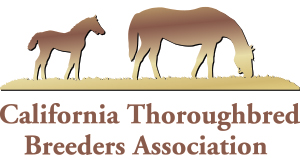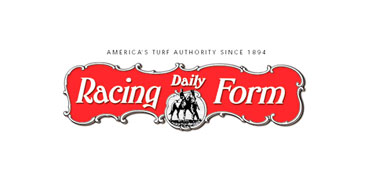By Jay Hovdey, DRF.com
ARCADIA, Calif. (Feb. 5, 2015) — There is a school of thought – or at least a correspondence course – that holds that the reigning Horse of the Year should have no easy afternoons. That he or she should be tested to the max in each and every race, and that the title bestowed for the previous season should be validated at every possible turn.
Sounds good to me.
It probably was fun to watch but hard to be impressed when 1947 Horse of the Year Armed came out in early January of ’48 to beat Stageboy by half a length in an allowance race at Gulfstream Park. Roman Brother was a compromise choice as 1965 Horse of the Year when he got very good in the fall and won the Woodward, the Manhattan, and the Jockey Club Gold Cup in a 27-day span, but he hardly enhanced his status with his 1966 debut in an allowance race at Hialeah. And the mighty Forego would get those cute little seven-furlong Belmont Park allowance races first time out in 1976 and ’77 written for “non-winners of Horse of the Year five times,” or something like that.
California Chrome will get no such coddling. The 2014 Horse of the Year must begin to earn his keep right from the start Saturday, when he meets Shared Belief in the $500,000 San Antonio Stakes at Santa Anita Park. The San Antonio is being hailed far and wide as one of those rare, modern occasions – outside of a Triple Crown or Breeders’ Cup event – when worlds collide and the two best horses in fighting trim meet in a race of significance.
Alan Sherman, who trains California Chrome alongside his father, Art, bore close witness to the comeback of 1987 Horse of the Year Ferdinand in the 1988 San Antonio Handicap. The younger Sherman was working horses for Charlie Whittingham at the time and was most closely associated with Judge Angelucci, who the previous year had finished a close third to Ferdinand and Alysheba in the Breeders’ Cup Classic.
“I was always watching Charlie train all his horses,” Sherman said. “I worked Ferdinand a couple of times – he wouldn’t work real fast unless you wanted him to – and I worked with him in company a few times. Judge Angelucci, though, he was amazing. Every time I worked him, he’d run through the bridle.”
And run accordingly. Judge Angelucci beat Ferdinand by 3 1/2 lengths in the San Antonio.
The challenge at hand for California Chrome stacks up with some of the most daunting ever faced by a freshly crowned Horse of the Year. Bill Molter tossed his 1958 Horse of the Year Round Table right into the flame on Jan. 3, 1959, in the seven-furlong San Carlos Handicap at Santa Anita. It was the 53rd race of Round Table’s career, during which he had established himself as the most versatile racehorse in the history of the American game – precocious at age 3, beyond reproach on turf or dirt, comfortable at anything between seven and 10 furlongs, and a weight carrier who could routinely shade two minutes for 1 1/4 miles.
For his sins, Round Table was required to carry 132 pounds for the ’59 San Carlos and got his first look at a freaky-good 4-year-old named Hillsdale, who had already won the Malibu (Hillsdale would go on to take the San Fernando, the Santa Anita Maturity, the Hollywood Gold Cup, and the Woodward that season). In the San Carlos, Hillsdale, carrying 115 pounds and Tommy Barrow, pursued Terrang early and hit the front deep into the stretch. Round Table and Bill Shoemaker closed steadily on the outside, but at the end, it was Hillsdale by a head.
Kelso never dodged too many dances, so it was no surprise when, as the reigning three-time Horse of the Year, he began his 1963 campaign in the seven-furlong Palm Beach Handicap on Jan. 30 at Hialeah in a five-horse field that included 3-year-old champion Jaipur and his arch rival, Ridan.
People were still in therapy after witnessing the Jaipur-Ridan encounters in the 1962 Preakness and Travers. Stir in Kelso, and they were ready for anything. The players also knew the score, in terms of current form. Ridan was odds-on and won by nearly four over Jaipur, with Kelso, better than 2-1, finishing fourth. Kelso came back to beat them both 10 days later in the Seminole.
In more recent times, 1981 Horse of the Year John Henry returned from three months away from competition to run one of the best races of his life in the 1982 Santa Anita Handicap. Carrying 130 pounds, he was beaten a nose by the humorless French horse Perrault, then put up to first on Perrault’s disqualification.
The standard, though, for a returning Horse of the Year was set in 1956, when Nashua emerged as a 4-year-old on Feb. 18 in the Widener Handicap at Hialeah, four months after clinching his 1955 title in the Jockey Club Gold Cup. The champion carried 127 pounds, including Eddie Arcaro. I will now yield the floor to Charles Hatton, from his recap in the American Racing Manual:
“The race itself was one of the most dramatic of the season,” Hatton wrote. “With Arcaro racing him outside of Sailor, these two prompted Find’s pace to deep into the stretch, where a struggle ensued which gripped the crowd in a paroxysm of excitement that words cannot describe.”
Nashua beat Social Outcast by a head, with Sailor and Find lapped alongside. Whether or not California Chrome and Shared Belief can deliver at that level remains to be seen. But just in case, get your paroxysms ready.


